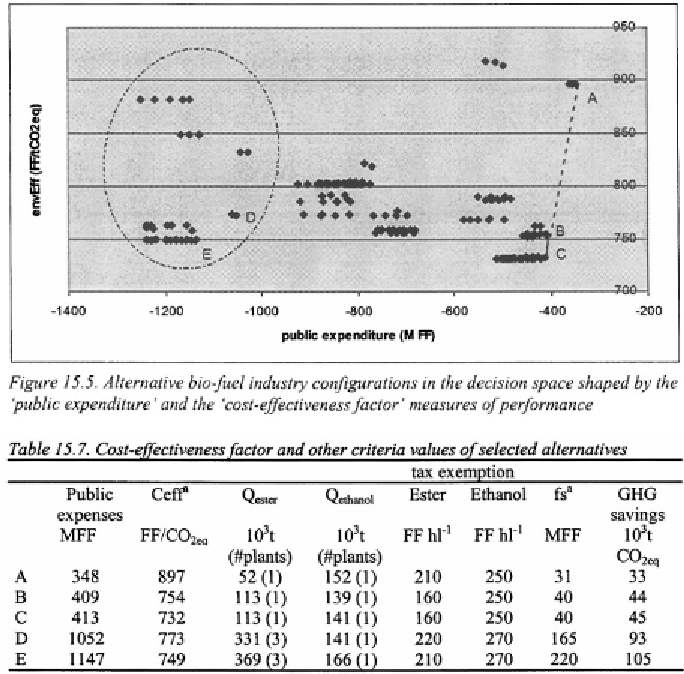Agriculture Reference
In-Depth Information
abatement which results in much higher activity levels especially
concerning RME production.
This implies that, in reality, multiple policy objectives exist behind
the pursuit of a single objective, such as budgetary discipline. Therefore,
components of the cost-effectiveness factor (chain surpluses, agricultural
surplus, public expenditure and the environmental effect) have to be taken
explicitly into account since each of them involves different stakeholders
such as the farmers, the industry, environmentalists and the government.
Thus, a multi-objective programming (MOP) approach would be
appropriate (
e.g.
Vanderpooten 1990). As it is extremely difficult and
arbitrary to give a relative importance (weight) to each criterion, an
interactive approach, which allows an exploration of the efficient solutions
and possible
among criteria, seems more appropriate than any



Search WWH ::

Custom Search